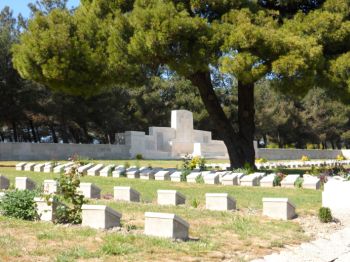|
|
| Home Topics Memorials Miscellany Transcripts References Family History Glossary Latest Beeston Blog About us | Site Search |
|
Private William Laurence Pearson was born in Kingston-on-Soar, Notts in 1894 2, the second son of John Thomas (b. 1868) and Mary Elizabeth (née Newcombe, b. Sutton
Bonington, Notts c1871) Pearson, part of a large family of ten surviving siblings. In 1901, he was living with his parents, two brothers and two sisters at Factory Street, Shepshed,
Leicestershire3. John Pearson, a native of Manchester, worked as a brick moulder. In 1911, William was living with his parents, 3 brothers and 5 sisters at St Johns Street, Thringston, Leicestershire, and was working as a brickyard labourer.4. William was quick to join the colours after war was declared at the beginning of August 1914, enlisting with the Leicestershire Regiment on the 17th of that month at Coalville, Leicestershire, joined 6th Battalion two days later and was sent to Aldershot for training a week later. However, within a month he was declared unfit for service, having a flat foot. and was discharged on 23 September 19145. Determined to join up, William apparently enlisted with the Highland Light Infantry before transferring to the Kings Own Scottish Borderers, joining 1st Battalion after it had returned to England from Lucknow, India on 28 December 1914. On 25 April 1915, the Battalion left for Gallipoli as part of 87th Brigade, 29th Division, part of the 78,000 strong Mediterranean Expeditionary Force under the overall command of General Sir Ian Hamilton. The Gallipoli Campaign was fought by Commonwealth and French forces in an attempt to force Turkey out of the war, to relieve the deadlock of the Western Front in France and Belgium, and to open a supply route to Russia through the Dardanelles and the Black Sea. The naval attack that had commenced in mid-February 1915, faced mines and heavy gunfire from shore batteries and the main attack sustained heavy losses and was forced to retreat. Preparations for the subsequent land assault, tasked with knocking out the Ottoman mobile artillery, so that the naval objectives could be achieved, did not bode well. There were severe logistical problems, there were limited troops available for the rugged terrain that would be encountered and many of those that were to take part had little training or experience. At the same time, there was time for the Ottoman forces, by now supported by German officers, to prepare their defence. The Allies landed on the peninsula on 25-26 April 1915; the 29th Division at Cape Helles in the south and the Australian and New Zealand Corps north of Gaba Tepe on the west coast, an area soon known as Anzac. Losses were very heavy against a determined and well-prepared enemy but, although exhausted and unnerved by the battles for the beaches, 29th Division was able to continue inland and to capture Seddülbahir village on 26 April. Desperate fighting continued throughout May and June and was to continue until January 1916 when the remaining defeated Allied troops were evacuated. The attempt to secure a passage through the Dardanelles had been unsuccessful and General Sir Ian Hamilton was recalled, his career effectively at an end. On the 28th June the 87th Brigade of which Private Pearson was a part, had been part of an action that became known as the Battle of Gully Ravine. Although the action was largely successful in achieving its objectives - though with heavy cost - 1st Battalion, the Border Regiment faced heavy resistance as it advanced and Private Pearson was killed in action on the first day. Private Pearson was buried originally at Geoghegan's Bluff Cemetery in the ravine, before removal to the Geoghegan Bluff plot at Twelve Tree Copse Cemetery, Helles after the Armistice. By 1917, Private Pearson's parents had moved with their remaining family to live at 19 Upper Regent Street, Beeston after John Thomas found work as a labourer at Beeston Foundry and also, for a short period,
at the Chilwell Shell Factory. The family later moved to Greyhound Yard, Beeston6. Twelve Tree Copse7 - was made after the Armistice when graves were brought in from isolated sites and small burial grounds on the battlefields of April-August and December 1915. The most significant of these burial grounds were Geoghegan's Bluff Cemetery, which contained 925 graves associated with fighting at Gully Ravine in June-July 1915, Fir Tree Wood Cemetery, where the 29th Division and New Zealand Infantry Brigade fought in May 1915 and Clunes Vennel Cemetery, on the south side of Krithia, which contained 522 graves. Footnotes 1The photograph of the Twelve Tree Copse Cemetery is from the Commonwealth War Graves Commission website. (http://www.cwgc.org) 2Loughborough Registration District Q2/1894 Ref 7a 139. 31901 Census : Piece 2978 Folio 179. 41911 Census : Piece 19085 RD404 SD4 ED5 Schedule 178 5Army Pension Records - WW1 6Commonwealth War Records Commission website and Beeston Boiler Company Ltd records 7The description of the Twelve Tree Copse Cemetery is based on that on the Commonwealth War Graves Commission website. (http://www.cwgc.org) |
|
|||||||||||
|
|
|||||||||||||
